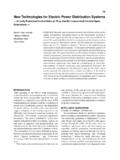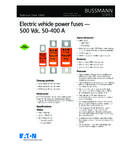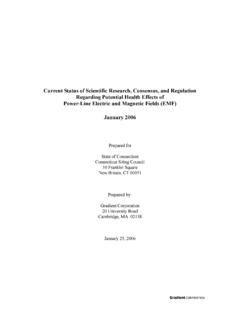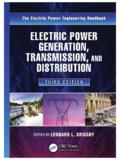Transcription of Electric Power Demand of Buildings - Design Aid - filetoth.eu
1 Budapest University of Technology and Economics, Faculty of Architecture Department of building Energetics and Services, Electric Power Demand of Buildings COMPLEX 1 & DIPLOMA Design Aid Andr s Majoros, Emil Vet si, Levente Filet th Edited by Levente Filet th 2014 February Budapest University of Technology and Economics Department of building Energetics and Services, _____ p letek villamos ell t sa, KOMPLEX 1. s DIPLOMA tervez si seg dlet 2. TABLE OF CONTENTS CALCULATION AND Design TASK 3 DELIVERABLES 3 1. PROBABLE Electric Power SUPPLY OF THE building 4 TRANSFORMER STATIONS 6 BACKUP AND EMERGENCY Power SUPPLY SYSTEMS 9 PHOTOVOLTAIC PANELS 12 2. CALCULATING THE Electric Power Demand OF THE PROJECT 13 Electric Power Demand OF NON- RESIDENTIAL Buildings 13 Electric Power Demand OF RESIDENTIAL- TYPE Buildings 17 3.
2 REQUIREMENTS OF Electric SWITCH- ROOMS 18 Budapest University of Technology and Economics Department of building Energetics and Services, _____ p letek villamos ell t sa, KOMPLEX 1. s DIPLOMA tervez si seg dlet 3. Calculation and Design Task The goal of the Electric Power Demand calculations are to forecast the method of the Electric supply of the building and to Design and determine the corresponding required electrical utilities. The following is an approximate Electric Power Demand calculation. The actual, realized Electric Power Demand of the building may differ up to approximately 25% compared to the results calculated here. At the early Design stages we do not have detailed and precise information about the building to perform more accurate calculations. The purpose of this electrical calculation is to determine the probable Electric supply method and to forecast the area and the number and the area of the corresponding Electric switch-rooms, battery rooms, transformer rooms or to host diesel Power generators, etc.
3 Deliverables Please complete the following, specific tasks throughout the semester: 1. Describe the probable method of the Electric Power supply of the building (this should be determined by the preliminary submission of the Design project). 2. Calculate the Electric Power Demand of the building . 3. Determine the number and size of the rooms and areas required for the Electric Power supply. Please indicate these rooms in the architectural Design documentation. Please submit the lighting Design deliverables as part of the " building Energetics and Services" booklet. Budapest University of Technology and Economics Department of building Energetics and Services, _____ p letek villamos ell t sa, KOMPLEX 1. s DIPLOMA tervez si seg dlet 4. 1. Probable Electric Power supply of the building The probable Electric supply method of the building depends on: the expected sum of the simultaneous Electric Power Demand , and the site and the surroundings of the building .
4 The site of the building usually determines its Electric Power infrastructure and supply methods. The Electric Power infrastructure depends on the building density of the plot (downtown, suburbs, rural, etc.). The structure and the density of the plot determine the electrical Power Demand [kW/km2] of the area, which forecasts the probable electrical infrastructure as well. The electrical devices in the Buildings are utilizing kV (400/230 V) network. The Power network is underground cable network in case of dense downtown areas and air cable network supported by columns in case of suburbian and rural areas. This electrical network is always supplied by a transofrmer. The transformer supplied by a mid-range electrical network: in dense, downtown areas the transformer is supplied by a 10kV Electric Power network, this is a so called 10 kV transformer. In such areas the low- and mid- Power electrical networks are underground cable infrastructures, in suburbian and rural areas the transformer is supplied by a 20kV air-cable Power network, this is a so called 20 kV transformer.
5 In such areas the low- and mid- Power electrical networks are open air cable infrastructures supported by columns. The Electric Power Demand of the building may vary between the range of a couple of 10kW and couple of 100kW, depending on the size and the function of the building . If the specific Power Demand of the building is relatively small, it can be considered to provide the Electric Power supply using the available kV underground- or overhead line network. In such case the existing Electric network must have adequate free capacity to supply the Demand of the new building . The actual value of this realtively small Demand might vary depending on the location and on the building in the practice such information must be provided by the corresponding Electric authorities. Budapest University of Technology and Economics Department of building Energetics and Services, _____ p letek villamos ell t sa, KOMPLEX 1.
6 S DIPLOMA tervez si seg dlet 5. When developing the semeseter Design projects, we consider, that the required Electric Power Demand can be provided using the kV network, if the forecasted Electric Power consumption of the building is bellow: 200 kW in case of downtown area, 100 kW in case of suburbian, rural area. Red text: 20kV air cable; Blue text: 0,4kV air cable; Green text: Phone, TV cable The location and cable interface of the transformer may vary, the actual Power supply solution depends on the type of the mid-range Electric Power network and the proposed location of the transformer station (inside or outside of the building ). The followings must also be considered and elaborated when deciding about the Power supply of the building : Forecast the necessity of a transformer station: if a transformer station is requied, its location and charactersitics must be considered when creating a transformer station inside or outside of the building , Decide about emergency and backup Power supplies, Consider using renewable energy (sun, wind or water) to generate electricity.
7 Budapest University of Technology and Economics Department of building Energetics and Services, _____ p letek villamos ell t sa, KOMPLEX 1. s DIPLOMA tervez si seg dlet 6. Transformer stations In dense, downtown areas where the transformer is supplied by a 10 kV Electric Power network: inside the building in a transformer room, outside of the building in a dedicated, prefabricated, uni-body transofmer station. In suburbian and rural areas where the transformer is supplied by a 20 kV overhead line network: as a column transofmator placed in a public area, outside of the building in a dedicated, prefabricated, uni-body transformer station (in such case a 20kV cable connection is required between the transofmer and the building ), inside the building in a transformer room (in such case a 20kV cable connection is required between the transofmer and the overhead line network).
8 Transformer stations outside the building (above ground and underground) Column transformer stations Budapest University of Technology and Economics Department of building Energetics and Services, _____ p letek villamos ell t sa, KOMPLEX 1. s DIPLOMA tervez si seg dlet 7. The main sizes of a 630 kVA-es transformer: 140 x 95 x 160 cm, weight: 2000 kg. Please consider the following rules when designing a transformer station inside the building : the transformer station must be located on the ground floor or on the first basement level, the transformer station must be located on the external building envelope (one of the walls of the station must be ab external wall), the floor area of a station is about 10 m2, the internal headroom of the station must be at least 2,6 m. If the transformer station is located on the ground floor only one external door must be provided towards the exterior of the building .
9 If the transformer station is located on the first basement level, a 1,4 m wide service well must be provided to access the station from the outside. Besides the service well, an internal door must also be provided to be able to access the transformer station from the inside of the building . Floor plan schemes of a 630 kVA transformer station (must be located on the ground floor or on the first basement level of the building , along an exterior wall) Budapest University of Technology and Economics Department of building Energetics and Services, _____ p letek villamos ell t sa, KOMPLEX 1. s DIPLOMA tervez si seg dlet 8. Floor plan and section sketch of a 630 kVA transformer station Budapest University of Technology and Economics Department of building Energetics and Services, _____ p letek villamos ell t sa, KOMPLEX 1. s DIPLOMA tervez si seg dlet 9.
10 Backup and emergency Power supply systems Depending on the function of the building , and the possible danger caused by the absence of Electric Power provided from the grid (hospitals, concert halls, factories, airports, fire stations, etc.), a backup and/or an emergency Power supply might also be necessary. These are the main criterias to be considred when deciding about emergency and backup Power supply systems: the Power Demand of those Electric devices must be calculated that requires backup Power , the maximum allowed time duration must be determined that is allowed between the Power failure of the grid and the initialization of the backup system (how long can de building be without Electric Power : only milli-seconds, or a couple of minutes?). Based on the above criteria, there are two main type of Power backup systems batteries and diesel-engine powered generators.







